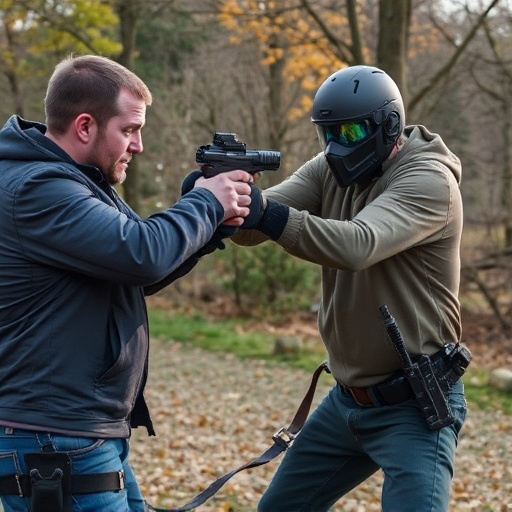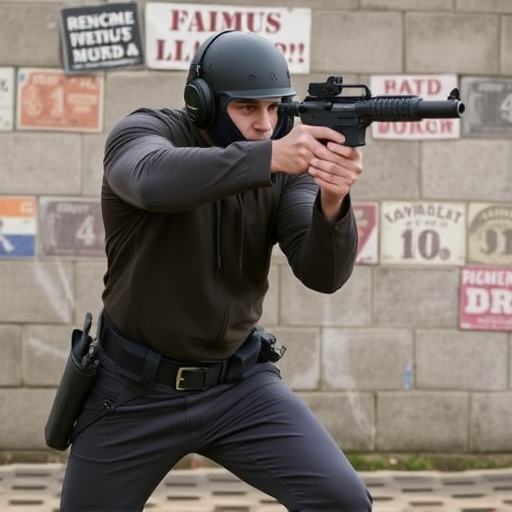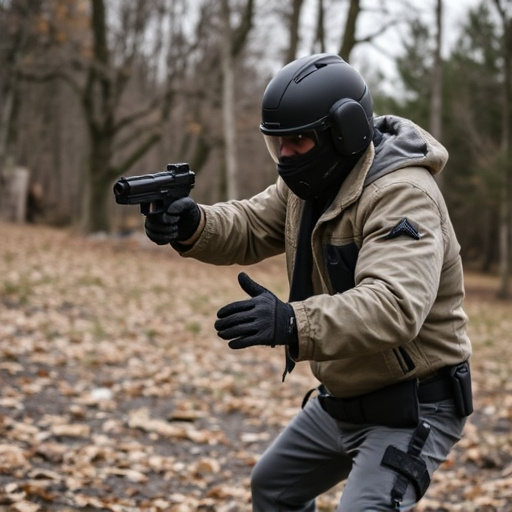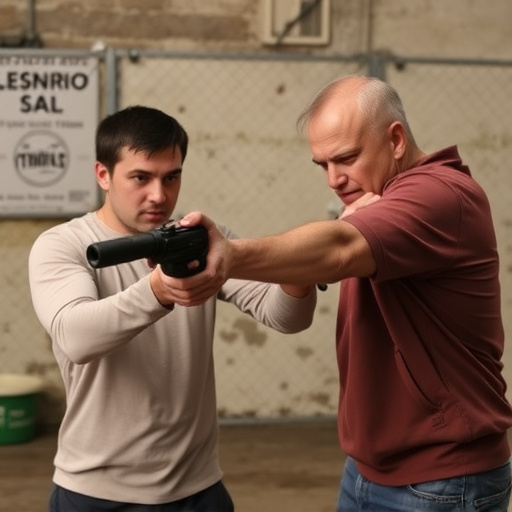Understanding muscle incapacitation duration is crucial when choosing affordable stun guns for self-defense, as these devices temporarily disrupt attackers' neuromuscular systems for up to 15 minutes or more. In the digital age, stun guns are gaining popularity as budget-friendly personal safety options, offering convenience and accessibility with various power levels and styles. Their effectiveness depends on factors like voltage output, contact area, and electrical conduct quality, allowing users to tailor shocks for optimal performance in diverse environments.
In today’s world, personal safety is a top concern. One effective tool gaining traction as a viable self-defense option are affordable stun guns. Understanding how these devices work, specifically their impact on muscle incapacitation and the duration of inaction they induce, is crucial. This article explores “Understanding Muscle Incapacitation: How Long Does It Last?” and delves into the “Affordable Stun Guns: A Viable Self-Defense Option,” while also examining factors influencing their efficacy and duration.
- Understanding Muscle Incapacitation: How Long Does It Last?
- Affordable Stun Guns: A Viable Self-Defense Option
- Factors Influencing Stun Gun Efficacy and Duration of Inaction
Understanding Muscle Incapacitation: How Long Does It Last?

When considering affordable stun guns for self-defense, understanding muscle incapacitation duration is crucial. The effect of a stun gun on a target’s muscles aims to temporarily disrupt their ability to function normally, leading to loss of balance and control. This disruption occurs through the delivery of an electric current that overloads the neuromuscular system, causing involuntary contractions and relaxation of the targeted muscles.
The duration of muscle incapacitation varies depending on several factors, including the stun gun’s power output, the specific body part targeted, and the individual’s physical condition. On average, a typical stun gun shot can cause muscle paralysis for 10 to 15 minutes. However, prolonged effects have been reported in some cases, lasting up to half an hour or more. This temporary incapacitation provides individuals with valuable time to escape potentially dangerous situations, making affordable stun guns a popular choice for personal safety.
Affordable Stun Guns: A Viable Self-Defense Option

In today’s world, affordable stun guns have emerged as a popular and effective self-defense option for individuals seeking to protect themselves against potential threats. These non-lethal weapons are designed to temporarily incapacitate an attacker, providing users with precious time to escape or seek help. Unlike traditional firearms, stun guns are relatively inexpensive, making them accessible to a broader range of people who want to enhance their personal safety without breaking the bank.
For those looking for an affordable self-defense solution, stun guns offer a simple yet powerful tool. Their compact size and ease of use make them convenient to carry, whether discreetly hidden or readily accessible. With various styles and power levels available, individuals can choose a stun gun that suits their specific needs and budget. This accessibility has contributed to a growing trend where more people are considering stun guns as a viable alternative for personal protection, especially in situations where the threat of physical harm is prevalent.
Factors Influencing Stun Gun Efficacy and Duration of Inaction

The effectiveness and duration of muscle incapacitation from a stun gun can vary based on several key factors, which is particularly important when considering affordable stun guns for self-defense. First, the power output of the device plays a crucial role; higher voltage outputs generally result in longer durations of inaction. Stun guns with adjustable settings allow users to tailor the shock level to specific threats, ensuring optimal effectiveness without overwhelming the target unnecessarily.
Second, the contact area and quality of electrical conduct are essential. Wider probes or contacts that make firm contact with the target’s body can enhance current flow, leading to faster and more profound muscle contractions. This is especially relevant for affordable stun guns, as proper design and material choices can significantly improve performance without breaking the bank. Additionally, environmental factors like temperature and moisture can influence the device’s operation; water or sweat may reduce conductivity, impacting the shock’s intensity and duration.
In conclusion, understanding the duration of muscle incapacitation from stun guns is crucial for effective self-defense. Affordable stun guns offer a viable option for personal safety, but their efficacy and the resulting duration of inaction depend on various factors. When considering an affordable stun gun for self-defense, being aware of these influences allows users to make informed decisions, ensuring they have the necessary tools to deter and disable potential threats quickly and safely.
